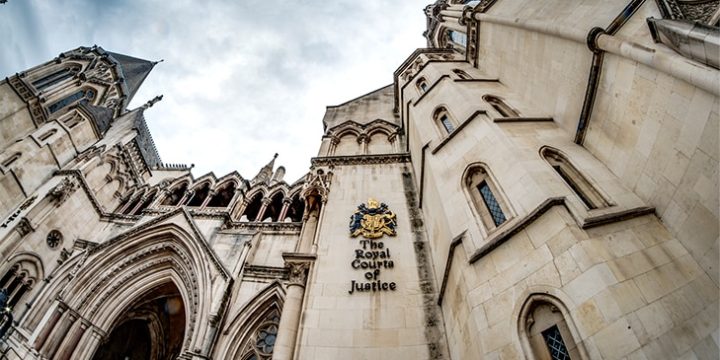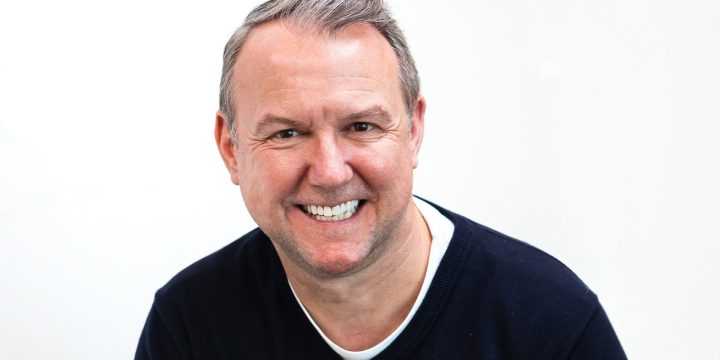News & Insights
Key public engagement issues for large-scale infrastructure projects
By Mike Bartram
Briefing Paper 13
June 2008
Contents
Consultation – An afterthought – 2
Where do major infrastructure projects come from? – 2
Defining your project – 3
Forming a project team – 3
Planning the consultation – 4
The challenge of consulting on major projects – 6
Conclusion – 7
Mike Bartram details – 8
Consultation – an afterthought
All too often, consultation on major infrastructure projects is an afterthought. The failure of project directors to build communication and consultation into the bloodstream of projects from the very start can have consequences for the integrity of consultation processes and the likely success of projects. So what can consultation managers working on specific projects do? And what should we be doing as a profession to alert project directors and planners to the benefits of considering consultation and wider communications issues from the earliest possible stage?
Where do major infrastructure projects come from?
For most of those who end up as consultees, and not a few consultation managers too, the answer to this question is shrouded in as much mystery as the early childhood question “where do babies come from?” In essence, planners and policy makers in government (central, regional and local) seek to understand social, economic and environmental trends; set goals and targets to
accommodate, limit or accelerate these trends; and introduce measures designed to achieve those objectives. Public servants are constantly at work crunching numbers about population growth, economic growth, travel demand and energy requirements, and looking at indices such as air pollution and social deprivation.
At the national level, green papers, white papers, legislation and statutory
guidance create a framework for local developments.
This tends to look a bit abstract to the public, always assuming they are even aware that the work is going on. Sometimes a major debate is highlighted in the media, such as the future of nuclear power in this country or where to build extra airport capacity in the South East. But the numbers participating in most high- level planning consultations are relatively small. This means that when the measures designed to deliver planning policies are revealed, all too often they appear to have been plucked out of thin air to deal with problems which have yet to manifest themselves in the public’s mind.
How can we involve the public more successfully in the development of the planning policies that set the parameters for major projects? Can we widen the early debates which do take place and make them more transparent?
Or is it human nature only to be interested in political issues when they are converted from seemingly abstract national concepts to specific, and often unwelcome, construction in their ‘back yard’? And if this is the case, what more can communications and consultation managers do to explain what may seem to many to be the ‘missing stages’ of consultation.
Defining your project
There is usually more than one way to address a problem of the kind identified above. Another way of asking the question “where do major infrastructure projects come from” is to ask “how is the favoured option selected”? Once again, for the average punter, this is a process shrouded in mystery. Veterans of public enquiries may have swatted up on government guidance about how to do options appraisals in order to oppose developments of which they are critical. But few people really understand how wide the net must be cast when looking at alternatives, how rigorous the appraisal must be and what the show-stopping criteria are. They are unfamiliar with how business cases are put together, how benefit cost ratios are calculated, and how alternatives are ruled out by failure to overcome these hurdles. They would be shocked, but perhaps not surprised, to learn how often pragmatism driven by political leadership and funding opportunism results in a narrow range of options, questionable assumptions and appraisals carried out at the last minute or even retrospectively. A sophisticated campaign of opposition to a proposal may start to draw this out; more often, members of the public are left scratching their heads questioning whether what they are being presented with is really the best solution. How best can consultation managers involve themselves in the options appraisal process so
they can help to communicate it to the public when consulting?
Forming a project team
Project teams tend to be set up when the workload becomes too much for the planning person or persons who have identified the problem and solution, and when the political momentum and funding opportunity provide sufficient impetus.
Project directors vary in their skills and background, of course. But on the whole they are technical people, recruited to deliver a scheme within set parameters to a timescale and budget. They tend to see their job as to get the project through
as defined, and rarely see it as their job to explore significant departures from the narrow project description to achieve the same ends. Neither are they natural salesman or necessarily political.
Perhaps because of their lack of confidence in this area, project directors are
often slow to appoint communications and consultation managers who can define this workstream. The failure to do so stores up all kinds of problems for later on, not the least of which are inadequate information and unrealistic timescales.
Often, the communications workstream is defined solely in terms of a single statutory consultation. Typically, perhaps six weeks is allowed to capture the public’s views and there is no time allocated in the programme to prepare for the consultation, consider the results, or commission further studies to look into options put forward by respondents. It is assumed that the consultation represents a brief interruption to the stately progress of the project as defined, an essential statutory hurdle to pass over, rather than an opportunity to improve the project or even question its validity.
This narrow, technical, professional world view is the antithesis of the more flexible, enquiring but generally uninformed approach of the non-committed member of the public. Where a project requires political approval, early consideration needs to be given to how sufficient political support is to be built up. Studies need to be scoped out so that they generate the answers to the questions sceptics are likely to ask. ‘Winners’ and ‘losers’ need to be identified. Research needs to be conducted into the views of different stakeholders – such as local politicians, the media, statutory agencies, residents groups – and their relative power and influence. And a dialogue needs to be started to understand
concerns, prevent a breakdown of trust and offer a direct communication channel between the community and the project, so that discussion is not played out in the local media. This needs to be done as early as possible.
Planning the consultation
By the time the consultation manager comes on board they may be presented with a narrowly defined project with an apparently unstoppable internal momentum, but low public awareness and buy-in, a lack of public information about options and impacts, and an unrealistic timetable for consulting which has already been shared with their political masters. At worst, opposition campaigns may already be gathering support as rumours grow and are met only with silence.
The first task for the consultation manager is to help to determine the objectives and timing of consultation. A balance needs to be struck between, on the one hand, consulting too early, being unable to answer people’s questions and being accused of not having thought your proposals through and, on the other, consulting too late and being accused of having already made your mind up about all the issues. In practice there can often be a reluctance to extend unresolved internal debates to the public, with project managers preferring to settle on their own view and pin everything down before inviting comments from outside. Consultation can be used to seek broad, public endorsement of a proposal. Or its main purpose may be to identify issues and concerns which might be addressed through detailed design. The timing of a consultation can also be influenced by external factors, such as a desire to avoid the potential politicising of your project in the run-up to elections.
It is really important to challenge the project director about the purpose of the consultation. What do they really want out of the consultation? What questions are up for grabs? What questions have effectively been decided by the setting of the parameters of the project or government rules for the funding of projects and the calculation of costs and benefits?
The sort of practical questions you might ask yourself are:
• What information do you need for your consultations, and when will you have it?
• How much time should you allow for preparation, seeking people’s views and analysing the results of the consultation?
• How much time should you allow to consider the results and make decisions? Depending on the project, and the stage of development it has reached, the sort
of information you might need, beyond a reasonably detailed description of the proposal, relates to defining the problem to be addressed; identifying the options considered; measuring the various economic, social and environmental impacts of
the proposal; and explaining how the project is being funded and delivered. The
decision about whether you are ready to go out to consultation depends to a significant degree on whether all of the studies you have commissioned have reported and if you’re in a position to provide a convincing narrative, backed up by figures calculated according to a consistent set of assumptions. Don’t just speak to the project director; try and speak to the whole team and go through the briefs consultants have been given for the technical work. Otherwise, you may find the information you get back doesn’t answer the questions the public will be asking.
It is not appropriate to try and “sell” your project during consultation, so it is better to promote the project before the consultation begins. If the consultation manager has been maintaining a dialogue with the public and key stakeholders throughout the project, if awareness is high and if there is public support, it may be possible to launch straight into the consultation as soon as the figures are available to back up arguments. Where public awareness and buy-in is low, a period of several weeks, preferably months may be set aside to “warm-up” stakeholders.
Assuming you have the information you need and have “warmed up” your stakeholders, a rough rule of thumb might to be to allow 3 months to prepare for a major projects consultation, 3 months to gather views, and 3 months to analyse and report the results. But this will vary from one project to another.
Estimating the amount of time you need to decide how to accommodate the views you have gathered is a trickier calculation. Where responses throw up major new issues or indicate significant levels of opposition which are unlikely to go away, further studies may need to be commissioned and political deals done. This can take time. The consultation manager should seek to keep the public informed, even if there is no decision. Silence breeds cynicism.
The challenge of consulting on major projects
Major infrastructure projects present familiar challenges to the consultation manager, and some unique ones too.
Technical complexity. The consultation manager has to work with a wider range of technical disciplines than is typical with simple policy consultations. S/he needs to become familiar with supply and demand figures, environmental and other impacts, finance and funding arrangements. One of the criticisms of a consultation may be that insufficiently detailed information was provided; that answers to key questions was not forthcoming. So the consultation manager needs to get close enough to the figures to understand whether such charges are likely to be made and be brave enough to face down a project director who is determined to stick to the project’s delivery programme no matter what.
Scale. Major infrastructure projects can affect people over a wide area and in a range of ways. Communicating about complex issues to large numbers of people and recording their comments can represent a challenging logistical exercise. The consultation manager may need to commission opinion research, arrange a
touring staffed exhibition and, depending on internal resources, procure a designer, advertising agency, helpline provider, printer and mailing house. Larger consultations may need a programme manager sitting alongside the consultation manager to ensure that all of the arrangements are on track to go live on the publicised start date.
Organised opposition. Major infrastructure projects can generate opposition that is both ideological and personal. The pejorative term NIMBY is well-known for a reason, even if not always fair The long-term and multi-stage nature of major projects provides ample time for residents associations, heritage organisations and others to build alliances, develop detailed arguments and become expert at using local politicians and the media to expose any vacuum of information coming from the project even before a decision has been taken about what to consult on and when. The consultation manager needs to get the
balance right between taking on board the genuine concerns and issues of organised opposition groups and putting together a proposition for everyone to respond to. S/he also needs finely tuned ‘political’ antennae, recognising that the internal ‘political’ imperatives as well as the external political ‘battles’.
Seeing the bigger picture. The consultation manager needs to remember that there may not be a consensus about the problem that is being addressed – some people may see it as too far off to worry about. Even if such a consensus exists, there may be a lack of understanding as to why the proposed solution is the best or only one. Consultees may need to be given an opportunity to ‘catch up’. In order to do so, the consultation manager may need to challenge the project team to commission further work on appraising options if they judge that the project is likely to be exposed to criticism for approaching the issue too narrowly.
Conclusion
Effective public consultation on major projects will only happen once the public understand and take ownership of the problems identified by planners, the range of options available for addressing them and the assumptions on which favoured options are brought forward. Attention needs to be paid to how to bring this about.
Until progress is made on that, project directors need to understand the benefits of involving communications and consultation professionals from the start of their projects to help them to determine what to consult on and when, to raise levels of awareness and support for the aims of the project, and to ensure that projects generate the information necessary for the consultation in good time. Otherwise, they will continue to make life hard for themselves and the public to establish a dialogue from which they can both benefit.
Mike Bartram is a TCI Authorised Partner and has 20 years experience of promoting public participation and consultation. He was the Head of Consultation at Transport for London, where he led teams planning and delivering consultations on major transport infrastructure projects.
Prior to joining Transport for London, he was responsible for the National
Consumer Council’s work on transport, education and quality of public services.
His particular areas of expertise include strategic reviews of consultations and improvement plans, advising on consultation policies and on community engagement and planning and delivering major consultations. He is the author of a wide range of publications on public involvement, consultation, and consumer representation. Recent clients include English Partnerships, the BBC Trust and Greater Manchester Passenger Transport Executive.
This is the 13th Briefing Paper; a full list of subjects covered is available for Institute members and is a valuable resource covering so many aspects of consultation and engagement



